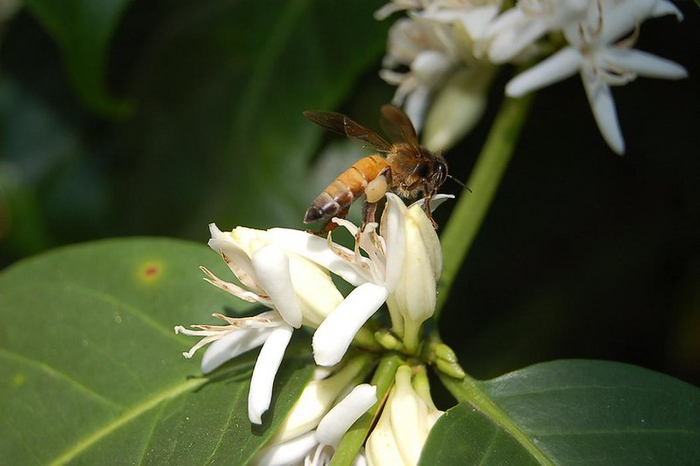Carefully planned restoration of agricultural coffee landscapes can increase both farmers’ profit and forest cover over a 40-year period, according to a study publishing May 23rd in the open access journal PLOS Biology by Dr. Sofía López-Cubillos at the University of Queensland in Australia, and colleagues.

Credit: Ganesh Subramaniam, Flickr (CC-BY 2.0, https://creativecommons.org/licenses/by/2.0/)
Carefully planned restoration of agricultural coffee landscapes can increase both farmers’ profit and forest cover over a 40-year period, according to a study publishing May 23rd in the open access journal PLOS Biology by Dr. Sofía López-Cubillos at the University of Queensland in Australia, and colleagues.
Restoring patches of natural vegetation in agricultural land presents a trade-off for farmers: while the lost cropland can reduce profitability, increases in ecosystem services like pollination can improve crop yield. To investigate how conservation priorities can be balanced with economic needs, researchers developed a novel planning framework to model the effects of forest restoration on agricultural profits, accounting for the beneficial effect of pollinators. They considered the best spatial arrangement for restoring forests to achieve one of two goals — restoring forest while also expanding agriculture, or restoring forest only — and applied this to a case study of coffee farming in Costa Rica.
They divided the study area into a grid of over 60,000 squares and estimated the current coffee yield, bee abundance, and profitability for each square. Calculating coffee profits 5 years and 40 years into the future under a variety of restoration scenarios, they found that strategically allocating land to agriculture and forest could increase economic returns, compared to a baseline in which the current landscape was maintained. Over a 5-year period, prioritizing restoration was more profitable than strategies that simultaneously expanded agricultural land. After 40 years, strategically balancing conservation and agricultural profits could increase forest cover by 20% while doubling profits for landholders, even when accounting for agricultural land replaced by forest.
The study is the first to consider how long-term changes in pollinator abundance can influence the costs and benefits of restoring forest across agricultural landscapes. The results show that with careful planning, pursuing conservation goals can improve economic outcomes for farmers, rather than being a burden, the authors say.
López-Cubillos adds, “Bee abundance and the pollination services they provide can increase through restoration. This study explored the trade-offs between coffee profitability and forest restoration, finding that within five years profits increased by ~90% after restoration and forest restored area by 20%.”
#####
In your coverage, please use this URL to provide access to the freely available paper in PLOS Biology: http://journals.plos.org/plosbiology/article?id=10.1371/journal.pbio.3002107
Citation: López-Cubillos S, McDonald-Madden E, Mayfield MM, Runting RK (2023) Optimal restoration for pollination services increases forest cover while doubling agricultural profits. PLoS Biol 21(5): e3002107. https://doi.org/10.1371/journal.pbio.3002107
Author Countries: Australia
Funding: see manuscript
Journal
PLoS Biology
DOI
10.1371/journal.pbio.3002107
Method of Research
Computational simulation/modeling
Subject of Research
Not applicable
COI Statement
Competing interests: The authors have declared that no competing interests exist.




